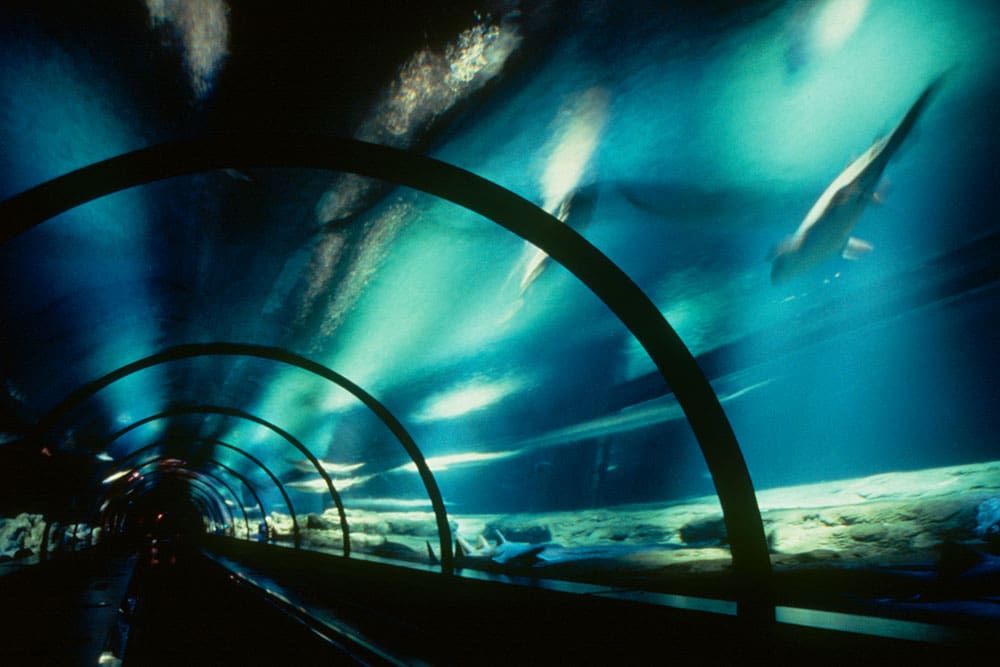As we move into summer vacation season, our office staff are taking off for beaches, museums, historic sites, and other attractions around the U.S. Talk about all those plans in our weekly meeting, brought back memories of one of our favorite projects from years ago….
A quarter century has passed since Sea World of Florida turned to Randy Burkett Lighting Design for a fresh look at illuminating ocean habitats for their aquarium park in Orlando, Florida. A new world-class coral reef experience was to be built at the Florida destination alongside an existing, but somewhat dreary appearing shark encounter. These salt water tanks, two of the largest of their day, were uniting with a number of smaller poisonous and venomous marine life tanks to form a complete exhibit experience. Without any natural light made available in the aquatic enclosure’s plan, the electric lighting design was tasked with providing a convincing, habitat-responsive sea environment.
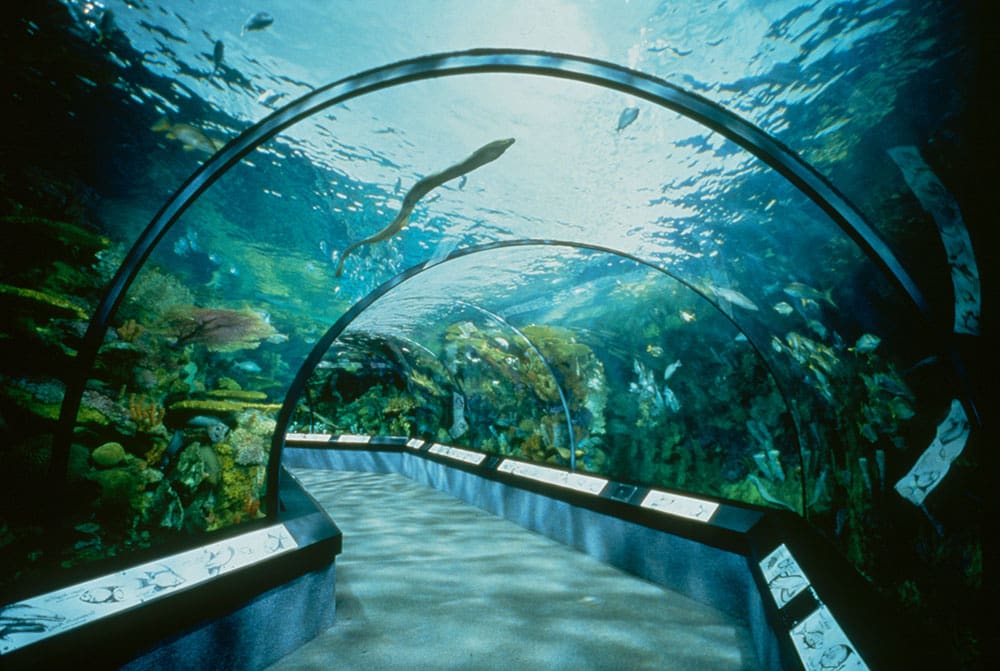
Much of the Caribbean coral reef underwater sensation was created by lighting equipment sealed within a hidden overhead projection space adjacent to the void above the tank. The above-water cavity’s ceiling and walls were painted matte white to allow for their use as light projection surfaces. An artificial sky was simulated by illuminating the entire volume with blue-filtered 1,000-watt metal halide floodlights; combined with twelve pattern projectors controlled through a slow cross-fade sequencer to simulate constantly moving clouds. PAR spotlights mounted directly within the open cavity mimicked direct sunlight from a constant midday angle. With visual distortion created by the continuously active water surface conditions, views for the visitors from inside the walk-through acrylic tube at the base of the coral reef were completely convincing and reinforced the experience.
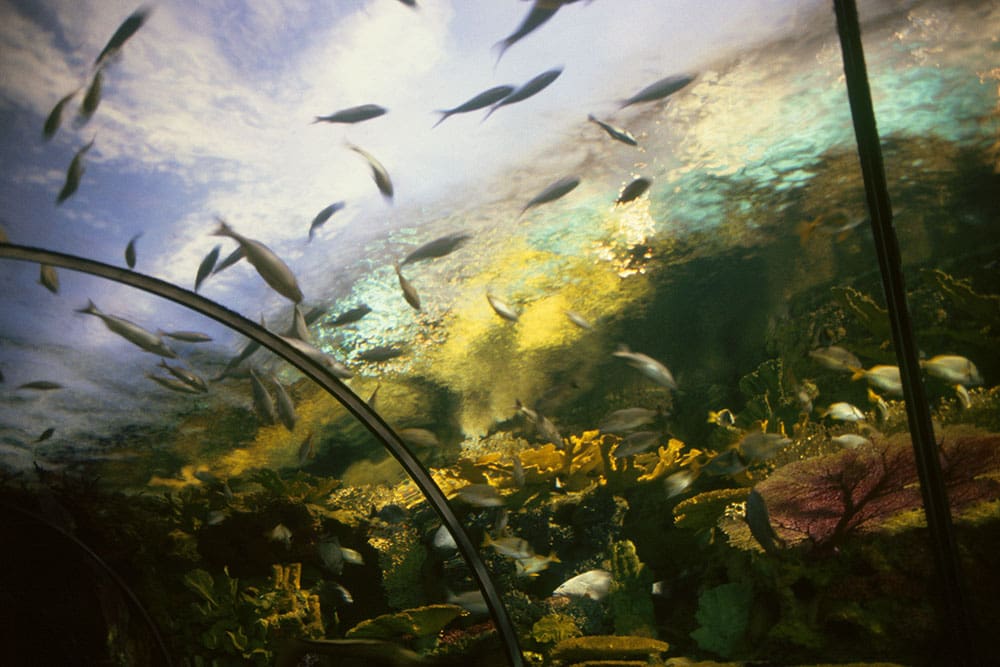
One other unique but not so successful enhancement, integrated fiber optic bundles throughout the artificial coral formations to help reveal the eels in the shadowed recesses. Unfortunately, the slithery occupants did not care for the intrusion and, once they were introduced to the habitat, they proceeded to chew off most of the lensed fiber end points.
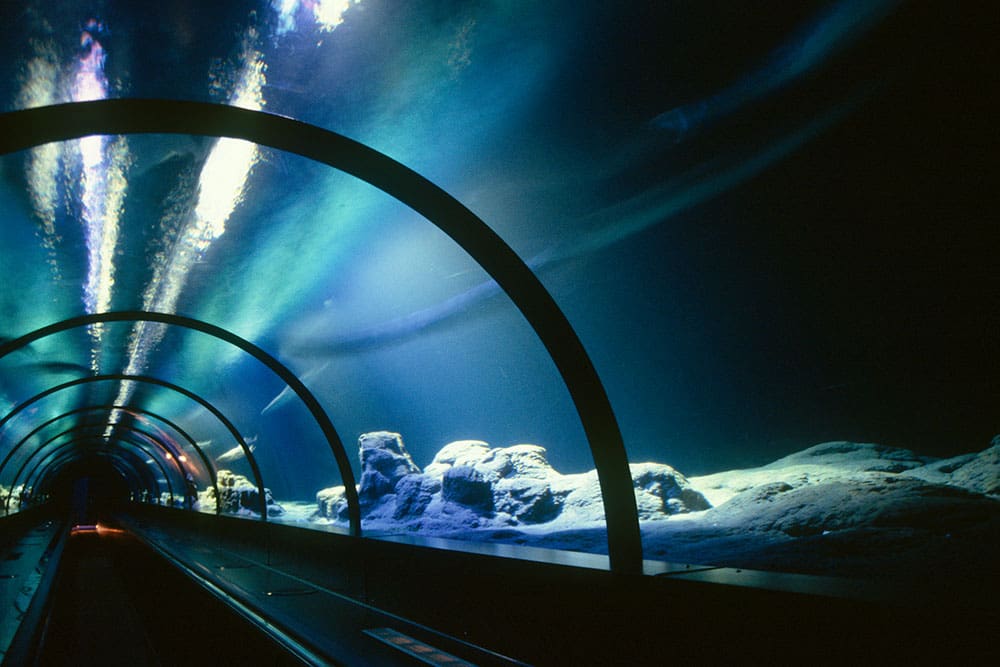
The Shark Encounter deep ocean habitat, which had been open for more than a decade and was one of the park’s most popular exhibits, had an only minimally acceptable lighting system. The voluminous warehouse enclosure with its interior painted matte black, had been illuminated using only high-bay industrial HID units and floodlights hanging over the tank, pointing straight downward. The view of the sharks from the sea-floor acrylic viewing tube was severely compromised by glare, and most sharks were seen only in silhouette. In describing the new lighting solution for Lighting Design & Application, Randy Burkett related, “We removed all the existing lighting equipment and mounted theatrical rigging above the tank from the roof structure on either side of the submerged walkway. Aluminum PAR-cans were mounted on the pipes and aimed parallel to the transparent tunnel. With direct source light never actually striking the pedestrian subway itself, the acrylic virtually disappears. All the units are focused from behind the visitors’ heads and are louvered. Even if you turned around to look back, they were practically invisible.”
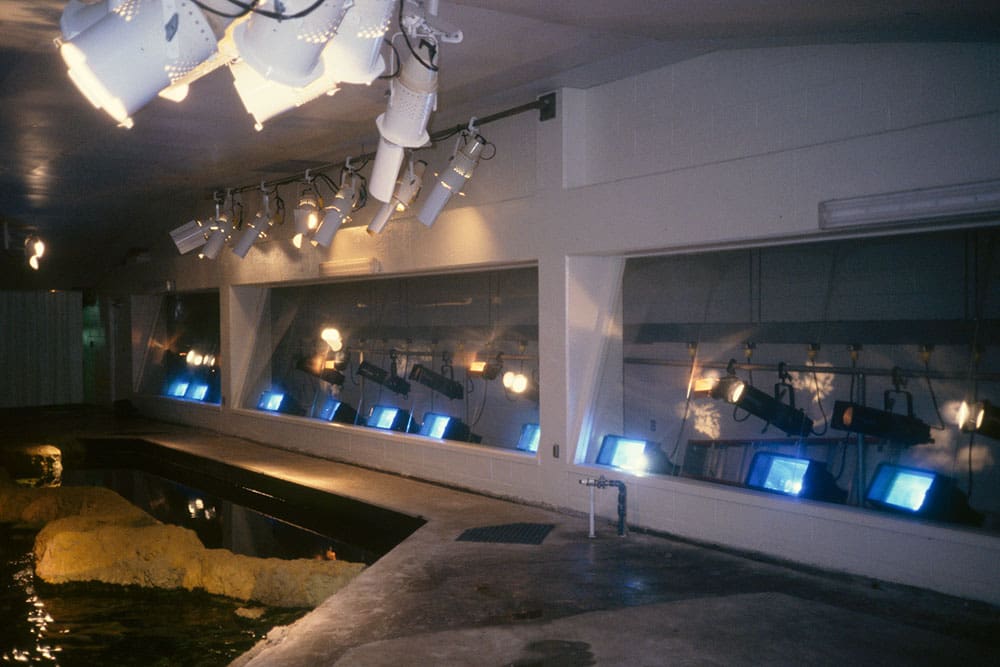
Although the tank was only about 15 feet deep, the environment simulated is that of an open ocean – a deep, dark environment where you cannot see the surface. What light there is at this depth is greatly attenuated by the salt water and longer wavelengths are significantly diminished. Light seen at this depth has a bluish cast. Several different dichroic filters were used to emulate the deep blue ocean color, and it was controlled to continually cross-fade, enhancing the sense of depth. The lighting was dimmed along the perimeter walls to create the effect of the sharks swimming in toward the visitors from a great distance, dramatizing their emergence out of the darkness.

Certainly not forgotten are a series of mock-ups conducted above the shark tank to demonstrate intended lighting effects for the Client, prior to finalizing the design. Randy recounts, “One of the electricians hired for the day of the mock-up to assist in hanging the temporary equipment fell into the tank. We never saw a person move so fast to get out of a pool. Unharmed, he laid along the pool deck for a few moments as a pair of animal husbandry folks ran along the apron toward him, but only to pass by, as they actually were checking to make sure the shark swimming patterns were not disrupted. Still makes me smile.”
The success of the project led to more aquarium work, including Sea World shark habitats in San Diego, open ocean tanks at the National Aquarium in Baltimore, and similar projects throughout North America.
